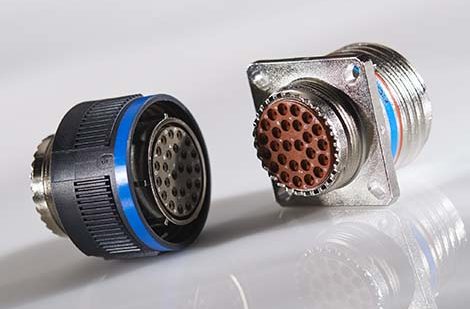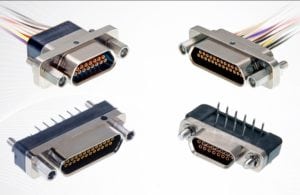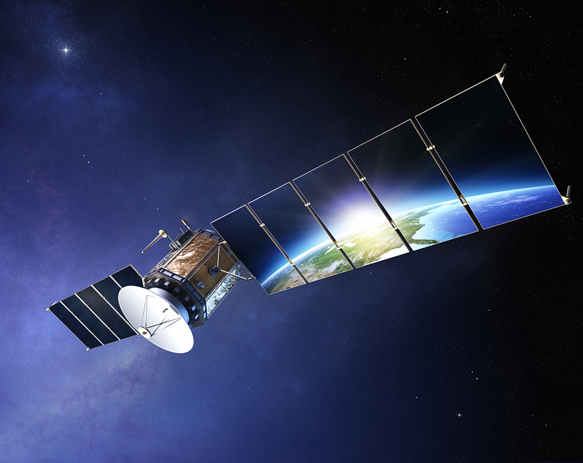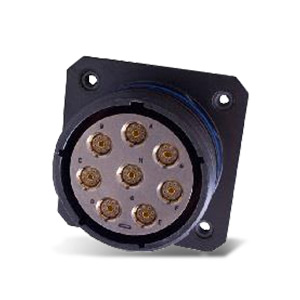Five Things to Consider for Connectors Employed in Low Earth Orbit Applications
Microsatellites aren’t subject to deep-space electronics requirements but the connectors that enable these small devices must still be able to endure rigorous launch conditions and perform in low Earth orbit.
Although the vast majority of space missions have been conducted in low Earth orbit (LEO), at altitudes between 99 and 1,200 miles (160–2000km) above the Earth’s surface, emerging LEO technologies continue to create new challenges and opportunities for connector manufacturers, distributors, engineers, and purchasing agents. The latest LEO market trend has communications, intelligent data, and defense companies deploying constellations of microsatellites as mesh networks to offer global access to internet, 5G wireless, GPS, secure communications channels, and even asset tracking and fleet management technologies.

Constellations of microsatellites deployed to create mesh networks in low Earth orbit can provide cost-effective solutions for global access to next-generation internet, GPS, 5G telecom, and secure communications services.
This next generation of microsatellite networks promises vast coverage areas for mobile phones, global internet access, improved accuracy for commercial (i.e., private, non-military) global positioning systems, and enhanced bandwidth for a wide spectrum of radio frequency communications. These various application areas present connector manufacturers, distributors, and engineers with a wide range of opportunities for high-reliability components that fit between commercial off-the-shelf (COTS) components and those fully rated and tested for deep space usage.

TE Connectivity’s subminiature MIL-DTL-38999 Series III circular connectors for harsh-environment military and aerospace applications feature a triple-start coupling mechanism with anti-decoupling ratchet for high-vibration applications, a grounded plug for superior EMI shielding, and 100% scoop-proof contacts for blind-mate coupling.
The major difference between components for LEO applications and those for deep space applications, like the Apollo, Voyager, and Curiosity missions, comes down to testing. Deep space components are rigorously tested and certified for use in extreme conditions over long lifetimes to prevent premature failure. Since they operate for extended periods in an environment where the repair of failed components is not easily accomplished, or even possible in some cases, space-certified components are typically overengineered for performance, which can increase weight and further contribute to higher component costs resulting from rigorous testing procedures. Low Earth applications tend to have a more limited life expectancy, with ranges in the five- to seven-year span, due to the rapid pace of changing technology. In many of these applications, technological obsolescence can set in before the satellite physically or electronically wears out.
Without the need for space-level certification, engineers designing for LEO applications are free to determine exactly which specifications most affect their component needs and limit testing to those specific attributes to reduce overall component cost and hasten the design cycle. The five characteristics that comprise most LEO component requirements are:
- Weight. Minimal component weights help maximize the payload for the launch vehicle, and one of the most appealing things about microsatellites is their performance-to-weight ratio on launch day. Lightweight composites, ruggedized plastics, and electromagnetic interference shielding are some of the many component design elements that can contribute to weight savings.
- Miniaturization. Miniaturized connectors and other components significantly contribute to the creation of ever-smaller satellites and increase the number of satellites that can be launched at one time.
- Data Rates. Even though devices and components are continually shrinking in size and weight, the requirements for higher data transmission speeds and extended bandwidth increase with every new generation of technology.

AirBorn’s M series micro-D connectors are qualified to MIL-DTL-83513.
- Lifecycle. Components employed in LEO applications have to strike the right balance between efficient limited-lifetime performance and the ability to survive the rigors of launch stress, as well as the extreme temperatures and other harsh environmental conditions of space.
- Cost. One advantage of microsatellite constellations is the ability to achieve economies of scale in manufacturing. Rather than building a small number of custom-designed and -built pieces of unique technology, these fleets of satellites, sometimes numbering in the hundreds of identical individual units, can employ mass production techniques to substantially lower the per unit cost.

With sizes and weights that are a fraction of those of conventional deep space satellites, LEO equipment can reduce launch costs to levels that make it possible for private firms to utilize space-based networks.

Amphenol Aerospace high-speed Octonet Contacts are qualified to MIL-DTL-38999 Series III , feature 360° shielding, and are rated for 500 mating cycles.
The industry has coined the term COTS+ (COTS-Plus) to designate the higher level of testing that can certify these commercial off-the-shelf parts for low Earth orbit applications. In the COTS+ market, off-the-shelf components are subjected to custom testing programs to achieve certifications that the standard commercial part would not be tested and qualified to. Because these satellites are most often designed, manufactured, and launched by private enterprises rather than the military or a governmental agency, customers’ engineering teams can create entire protocols of unique testing that differ from traditional space and mil/aero standards. This flexibility allows COTS components to be certified to deliver the required performance for the exact application circumstances and lifetime of individual LEO products, which helps minimize cost, mitigate the additional size and weight of over-engineered components, and hasten the product development process.
COTS+ components can also be achieved by modifying the design of standard component families to meet the application requirements. For connectors, this can apply to changes in materials, bandwidth, shielding, and many other design elements, and can achieve near-custom components at greatly reduced costs. These changes often spawn additions to the standard component family or lead to an entirely new part number that will help other engineers overcome similar design challenges and satisfy similar application requirements.

Telecommunications firms are increasingly employing COTS+ microsatellites to support a move from terrestrial networks for telecom services to LEO mesh networks capable of providing blanket global coverage.
The most effective means of developing a custom COTS+ part or a customized COTS+ testing protocol is to work with an authorized distributor who can provide focused, expert input and assistance for your specific design and conduct testing programs specified by the supplying manufacturer. Experienced authorized distributors have long-term relationships with the premier connector manufacturers and are one of the most reliable ways to ensure that component design, testing, manufacture, and delivery all conform to the project’s timelines, budgets, and performance goals.
The rise of increasingly capable and cost-effective low Earth orbit microsatellites offers both traditional, government-based space companies and private industries willing to embrace the next frontier of space-based applications with exciting new opportunities that will lead to innovative changes in space technologies.
By Roger Raley, Vice President, Mil/Aero Segment, TTI, Inc.
Interested in a specific market? Click a market below for current articles and news.
Automotive, Consumer, Industrial, Medical, Mil/Aero, Datacom/Telecom, and Transportation












